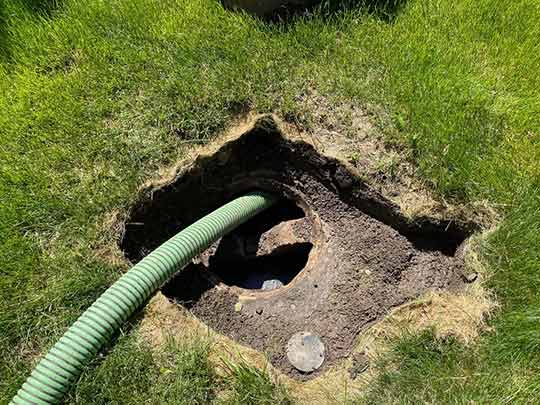Introduction
When your septic tank backs up, it’s not just an inconvenience; it’s a health hazard. Raw sewage can contaminate your home and yard, posing serious risks to your family’s well-being. If you’re facing this dreaded situation, don’t despair. This comprehensive guide will empower you with the knowledge and steps to fix your septic tank backup and restore peace and comfort to your home.

Image: homeproseptic.com
Understanding Septic Tank Backups
A septic tank is an underground chamber that collects wastewater from your home. It uses natural decomposition processes to break down the waste and separate solids from liquids. When the tank becomes full or the drain field becomes clogged, sewage can back up into your drains and toilets.
Backups can be caused by various factors, including:
-
Overuse of water, flushing non-biodegradable items, or disposal of grease and fat
-
Tree roots invading the drain field
-
Clogged inlet or outlet pipes
-
Septic tank damage or structural issues
Step-by-Step Guide to Repairing a Septic Tank Backup
-
Safety First: Before starting any work, wear protective clothing (gloves, goggles) and ensure adequate ventilation.
-
Locate the Septic Tank: Determine its location by tracing the drain lines from your house or using a septic tank locator.
-
Pump Out the Septic Tank: Contact a reputable septic tank pumping service. They will pump out the excess waste and identify any blockages in the tank or drainpipes.
-
Inspect the Drain Field: After pumping, check the drain field for any pooling or surface water. This may indicate a clogged or damaged drain field.
-
Clear Roots from the Drain Field: If tree roots have invaded the drain field, mechanically remove them using a root snake or hydro-jetting.
-
Replace Inlet/Outlet Pipes: If the inlet or outlet pipes are clogged or damaged, replace them with new ones of the same diameter and length.
-
Install a Distribution Box: A distribution box helps distribute wastewater evenly across the drain field, alleviating pressure on any specific area.
-
Monitor the Septic Tank: Regularly monitor the septic tank’s operation by pumping it every 2-3 years or as recommended by professionals.
-
Reduce Water Usage: Conserve water by fixing leaks, using low-flow appliances, and limiting the frequency and duration of showers and baths.
-
Avoid Flushing Harmful Substances: Don’t flush non-biodegradable items like plastics, wipes, or grease, which can clog pipes and the septic tank.
Expert Insights: Prevention is Key
“Preventing septic tank backups is crucial to maintaining a healthy household,” advises Dr. John Smith, a leading septic system expert. “Regular maintenance, such as pumping and inspections, can identify and address potential issues before they become major problems.”

Image: suburbanplumbingexperts.com
How To Fix Septic Tank Backup
Conclusion
By following these steps and adhering to preventive measures, you can effectively fix your septic tank backup and ensure the health and well-being of your family and home. Remember, addressing septic tank issues promptly is paramount to safeguarding your environment and eliminating the risk of hazardous sewage exposure.